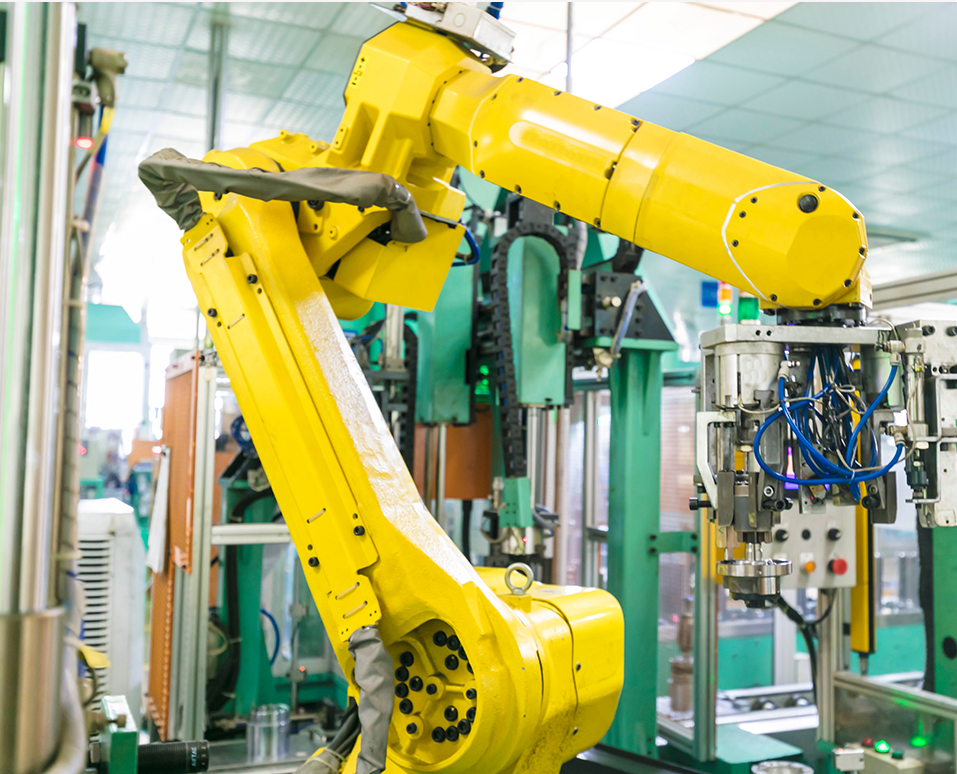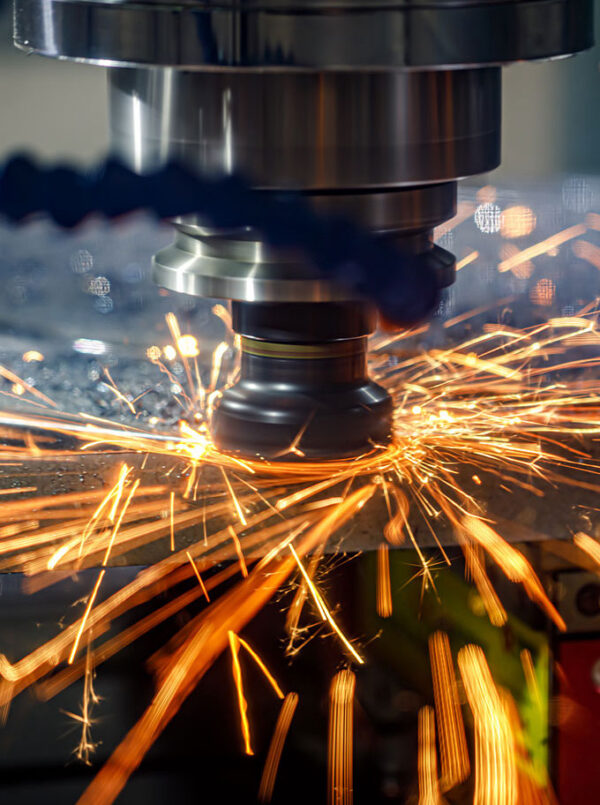In this edition of Ask the Expert, we speak with Amanda Jackson, Principal Consultant for the Alliance for Manufacturing and Technology (AMT), the Manufacturing Extension Partnership (MEP) Center serving New York’s Southern Tier. Jackson, a Six Sigma Black Belt, leads AMT’s Industry 4.0 initiative, helping small and midsized manufacturers implement the latest technologies and digital services to improve their efficiency, address workforce issues and gain competitiveness.
Give us a brief description of AMT and its mission.
AMT is a small, not-for-profit organization that helps small and midsized manufacturers be more productive, more profitable, and more competitive. We are part of the national MEP network and one of 11 centers in New York—10 regional and one statewide. We serve the Southern Tier. We receive state and federal funding from NYSTAR, the Department of Commerce, and the National Institute of Science & Technology (NIST). We provide a variety of consulting services to help people with growth and innovation, operational excellence, operational improvement, and workforce issues.
Tier. We receive state and federal funding from NYSTAR, the Department of Commerce, and the National Institute of Science & Technology (NIST). We provide a variety of consulting services to help people with growth and innovation, operational excellence, operational improvement, and workforce issues.
Tell us about the Industry 4.0 initiative and your role in leading it.
‘Industry 4.0 is all about technology, so our initiative aims to advance manufacturers’ use of technology. Initially, our approach has been to try to baseline and get a sense of where our small and midsized manufacturers are with technology to better understand how to serve them. We conducted a survey in partnership with Binghamton University and asked manufacturers all about technology to get a sense of where they are, what they have implemented, and what their concerns are in order to learn what gaps exist.
We found that some folks in our region are implementing technology, and some are hesitant or have a gap, either in knowledge or resources, to implement it. Folks were worried about the same kinds of things: do they have the people to implement technology and is there a real return on investment?
Our program at AMT has four components. First is the education piece, which helps educate manufacturers about which technologies are available and accessible and the price point. There is a readiness component where we help manufacturers access how ready they are, and which technologies will work for where they are in their journey. The other two pieces are road mapping and implementation—so, planning out how to put technology in place and then helping people implement the solutions. This includes vetting different partners or technology providers.
My role is to help develop the program and research what will work best for the Southern Tier’s small and midsized manufacturers–what serves them in terms of the problems they are experiencing and how technology can help.
What types of technology are we talking about?
It could be robotics–collaborative robots (cobots) or industrial robots that will load or unload a machine or do a specific function. It could be computer software that will help you track how production is going or communicate information from one person to another. There is virtual reality (VR) and augmented reality (AR), which can be used for training applications or troubleshooting. There is additive manufacturing, which is commonly known as 3D printing.
Sometimes we don’t really think about it, but there is your cellphone, your smartwatch, your devices that track and monitor progress, and even smart sensors—there is a variety of information and data that spits out from each of those technologies that you can use.
You joined AMT in 2021. Tell us about your background.
I’ve been in manufacturing for almost 20 years. I’ve been a manufacturing engineer. I’ve been in quality and operations management. Wherever I’ve worked, the throughline has always been a continuous improvement. I’ve implemented technology projects and managed large-scale projects in the past. I’ve worked in a few different industries—automotive, aerospace, food manufacturing, and most recently capital equipment manufacturing. So, I’ve seen a variety of manufacturing environments and I like the variety. I like that it is different all the time, but it is also the same. Everybody is making a product and trying to serve their customers.
During the pandemic, I realized I wanted to make a bigger impact on manufacturing. Manufacturing is my passion and I wanted to do more than just have an impact on a local site. Because AMT is a nonprofit and its whole goal is to meet manufacturers where they are and help them improve, it appealed to me, so, when an opening came up, I jumped at the chance.
What do you enjoy most about the job?
Every day you are potentially walking into a different manufacturing environment. Recently, I was working at a fabricator. We trained a food manufacturer a few weeks ago. And the people you meet in manufacturing? Of course, I’m biased, but I feel like they are always creative and resilient and adapting and solving all these different problems every single day.
I love brainstorming with people, I love going in and seeing what their pain points are, what they are struggling with, and sharing a small bit of my knowledge. I love the collaboration and I love that it’s different all the time, but a lot of things are similar from one place to the next. It keeps me on my toes.
Tell us about the types of successes you’ve seen
It is nice to see the impact some of those solutions can have on people. We recently watched a manufacturer implement a shop floor manufacturing execution system (MES), a software package that lets you track how things are going in production each day–what machines are down, who called out, etc. It is amazing to watch those folks just turn on their tablet screens and see where there is a problem. The solution they put in place took only a few months to implement, and it wasn’t that expensive for them.
Another example: As you know, supply chain disruption has been a big thing. One of the cool applications for technology has been the 3D printing of spare parts. A lot of manufacturers who are lean don’t have a lot of spare equipment; or something breaks, and they aren’t anticipating it, so that has been a great option. You can 3D print in a wide variety of materials.
A lot of people just think about using technology on the shop floor but there are a lot of things in the office that can improve, too. We worked with one manufacturer to develop a better approval system for documentation. It cut their process time in half, and it also meant these folders never got lost or stuck on someone’s desk. That wasn’t a complicated one; it was a software program they already had access to, but just something they hadn’t thought of previously. It doesn’t have to be a big investment.
Why should manufacturers work with you?
What folks should know is that the MEP network can be a huge conduit to help find technology partners and figure out what kind of business advice you need. For a lot of people, just starting is hard. “I don’t know where to start or how to get there. I don’t even know who to ask.” If they start by asking an MEP, we can help point them in the right direction or partner them up with one of the Centers of Excellence or Centers for Advanced Technology, Manufacturing USA Institute, or even local technology implementors or providers.
Working with an MEP center also takes some of the risks out of the endeavor. If you take something like a robot, it can be expensive. You have to make sure you’ve thought about all the pros and cons. Is it the right application? Are you selecting the right brand of robot? We can help you work through those issues and resolve them so that in the end it is the solution that solves your problem, not a robot under a tarp in the corner.
When you partner with an MEP center, it helps because we have done so many implementations, whereas a plant maybe did one or two technology solutions themselves. You get all of the added benefits of our knowledge, and the lessons we’ve incorporated, and we can tell you all these small wins we’ve been through that will be similar to your application.
Are there challenges in trying to get people to embrace technology?
 Manufacturing in the Southern Tier isn’t different from other places. People are focused on resolving first and foremost their workforce issues and, therefore, sometimes put technology on the back burner. That is where AMT is trying to bridge the gap and talk about what kinds of technology work and what are some wins from other manufacturers in our area. Manufacturers talking to other manufacturers is what really sells it. We try to identify folks in our area that have had really good successes and use them as a benchmarking opportunity for others to build from that.
Manufacturing in the Southern Tier isn’t different from other places. People are focused on resolving first and foremost their workforce issues and, therefore, sometimes put technology on the back burner. That is where AMT is trying to bridge the gap and talk about what kinds of technology work and what are some wins from other manufacturers in our area. Manufacturers talking to other manufacturers is what really sells it. We try to identify folks in our area that have had really good successes and use them as a benchmarking opportunity for others to build from that.
Can technology help with workforce development?
The short answer is “yes.”
Workforce development can mean a few different things. The worker shortage is most prevalent in the short term and yes, technology can make manufacturers more productive. One example is a cobot that would fill an open position. They would not be stealing a position from anybody but just filling an open slot because every manufacturer we talk to has at least one open position and some have hundreds.
There are also technology solutions that make communicating with each other faster and help with all the white space between your processes. When you can react to an issue faster or communicate without a lot of red tape from one department to the next it sometimes means you don’t need three people to do that role.
Then there are a lot of people like me, who have switched jobs, so one challenge with the workforce is getting people up to speed quickly. There are technology platforms that can help you train your people really quickly. Even VR and AR where you can train almost remotely.
Then there is getting your workforce to adapt to new technology. Part of that is just getting folks involved when you are putting something in place. If you are going to use some kind of new device like a tablet, have folks in your workforce help make the choice
Does technology help manufacturers attract younger workers?
I think part of the advantage of manufacturers implementing technology is the draw of having younger folks be interested in it. Young people are really great advocates of technology, and they are the next pool of available workers. They are not afraid to try new things or dabble with different types of technology. What we find is young workers are your best advocates for technology within a company and they also aren’t afraid to challenge how you are doing something if it doesn’t make sense. There is a reason they are using devices in school. They are innovative, they help people learn, they make it more fun and there are creative aspects to it. The same thing can be applied in a manufacturing workplace.

